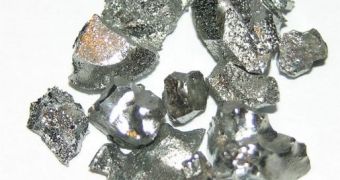Molybdenum-99 is one of the most crucial isotopes in the entire world, as it has numerous applications in medicine and imaging. The bad news is that next week, one of the primary reactors that regularly produce the stuff will be shut down for repairs. To make matters worst, there will be a few days in March when none of the five reactors that are producing Mo-99 will function, for various reasons. This brings the global supply of this medical isotope to critical levels, and this lacking could affect patients sooner than expected, Nature News reports.
Mo-99 is obtained by intense neutron bombardments of highly purified uranium-235 targets. The reason why this chemical is so important is the fact that the isotope naturally decays to produce the sought-for and short-lived isotope technetium-99m. The second is used in a variety of medical imaging techniques, including bone and heart scans, and it is estimated that about 70,000 procedures using it are conducted each day. As supplies dwindle, all these people, including emergencies, may be left without the most potent tools we currently have of looking inside the human body, without actually opening it up.
Next week, the High Flux Reactor at Petten, in the Netherlands, will go down for maintenance. This will place further strain on already-dwindling supplies, caused by the shutdown of the Canadian National Research Universal (NRU) reactor in Chalk River, Ontario. The machine was off-line for about nine months in 2009, following a heavy-water leak in May. The HFR will also undergo maintenance work, this time planned, but which will see it unable to produce Mo-99 for about six months. An entire network of pipeworks needs to be changed, experts managing the instrument said.
The thing about these two isotopes is that they cannot be stored. They have a very short half-life, which means that they need to be used as fast as possible, before they decay even further, and become useless. Most hospitals using them place them in devices known as “moly cows,” which produce a constant stream of technetium-99m, over several days. Doctors then simply “milk” the isotopes from the cows and use it in their imaging machines. The thing is that the HFR and NRU produce about 66 percent of the world's needs together, and so both of them being off-line will cause a major dent.

 14 DAY TRIAL //
14 DAY TRIAL //